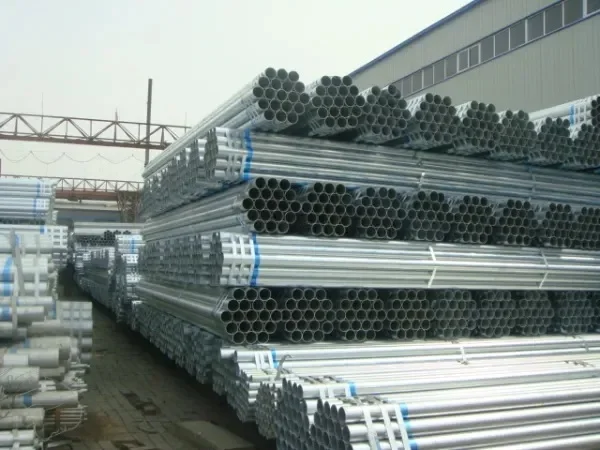What is the thickness of the zinc layer of galvanized steel pipe?
Steel pipe galvanizing is the process of electroplating or hot-dip a layer of zinc on the surface of steel pipes to slow down or prevent steel corrosion. The thickness of the galvanized layer is an important factor affecting the corrosion resistance of steel pipes.
Steel pipe galvanized layer standards are divided into three categories: GB/T1551-1994, ASTM A53-2007, and BS1387-1985. GB/T1551-1994 stipulates that the thickness of the galvanized layer on the surface of hot-dip galvanized steel pipe is not less than 65um, and the surface of cold-galvanized steel pipe is not less than 10um. ASTM A53-2007 requires that the thickness of the galvanized layer on the surface of the hot-dip galvanized steel pipe is not less than 1.8um, and the surface of the cold-galvanized steel pipe is not less than 1.6um. BS1387-1985 stipulates that the thickness of the galvanized layer on the surface of the hot-dip galvanized steel pipe is not less than 100um, and the thickness of the galvanized layer on the surface of the cold-galvanized steel pipe is not less than 7um.
In order to obtain satisfactory corrosion resistance of the steel pipe, the thickness of the galvanized layer must be controlled. Too thin a zinc coating will not provide adequate corrosion protection, while too thick a zinc coating may result in blistering and poor coating adhesion. The zinc coating thickness required for a particular application should be determined through testing and consideration of the steel pipe installation environment.
In addition to the thickness of the galvanized layer, other factors that affect the corrosion resistance of the steel pipe include the type of steel pipe, the installation environment, the quality of the galvanized layer, and the surface treatment of the steel pipe.

So, how to ensure that the zinc layer thickness of galvanized steel pipe meets the standard? This needs to start from the following aspects:
Choose the right galvanizing process. Different galvanizing processes will affect the thickness of the zinc layer, so it is necessary to choose a suitable galvanizing process to ensure that the thickness of the zinc layer meets the standard.
Control galvanizing time and temperature. The galvanizing time and temperature will also affect the thickness of the zinc layer, so it is necessary to control the galvanizing time and temperature to ensure that the thickness of the zinc layer meets the standard.
Choose the right zinc solution. Different zinc liquids will affect the thickness of the zinc layer, so it is necessary to select a suitable zinc liquid to ensure that the thickness of the zinc layer meets the standard.
Perform quality checks. Quality inspection is required during the production process to ensure that the zinc layer thickness of the galvanized steel pipe meets the standards.
In conclusion, the thickness of the galvanized layer of the steel pipe is an important factor in determining the corrosion resistance of the steel pipe and should be considered when selecting the proper steel pipe for a particular application. With proper selection and installation, steel pipe with the proper thickness of zinc coating can provide years of satisfactory corrosion resistance.
The Benefits of Using Galvanized Steel Pipes
How is hot-dip galvanized steel pipe produced?
How to Determine the Quality of Galvanized Steel Pipes?
Attention should be paid to the problems of galvanized steel pipe welding
How to Judge the Quality of Galvanized Steel Pipe?
Storage and Handling of Galvanized Steel Pipes






